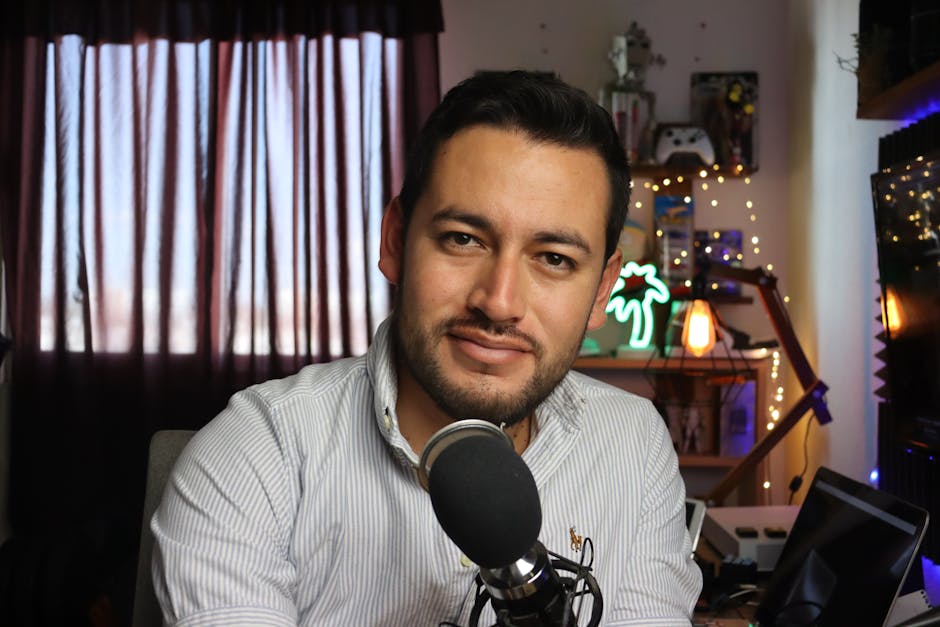How I Leverage Cross-promotion with Other Podcasters.
How I Leverage Cross-promotion with Other Podcasters
In the bustling world of podcasting, where new shows launch daily and listeners have an endless buffet of content, simply producing great audio isn’t enough to stand out. For years, I wrestled with the challenge of expanding my reach beyond my immediate circle. I tried every trick in the book – social media ads, SEO for show notes, even word-of-mouth campaigns – but nothing moved the needle quite like strategic cross-promotion with fellow podcasters. This isn’t just about swapping a quick mention; it’s a deliberate, relationship-driven strategy that has become the cornerstone of my podcast’s growth. Here, I’m going to pull back the curtain and share my exact blueprint for how I actively leverage these collaborations to gain new listeners, foster genuine connections, and build a more robust, engaged community.
My Blueprint for Identifying Complementary Voices
The first, and arguably most critical, step in my cross-promotion journey is finding the right partners. I don’t just reach out to anyone with a mic and a show. My approach is methodical, focusing on synergy and mutual benefit. Think of it as dating for podcasts – you’re looking for compatibility, shared values, and a future together, not just a one-off encounter.
Defining My Ideal Collaborative Profile
Before I even start searching, I create a clear profile of my ideal cross-promotion partner. I look for shows that:
- Serve a Similar, But Not Identical, Audience: If my podcast is about indie filmmaking, I’m not looking for another indie filmmaking podcast that covers the exact same ground. Instead, I’d seek shows about screenwriting, film festival strategies, acting careers, or even broader creative entrepreneurship. The key is that our listeners would likely be interested in each other’s content, but we’re not direct competitors.
- Match My Production Quality and Professionalism: While I appreciate all efforts, I prioritize collaborating with podcasts that demonstrate a similar commitment to audio quality, editing, and content delivery. This ensures a consistent experience for listeners who cross over.
- Have a Comparable Audience Size (or Slightly Larger): While I’m open to helping smaller shows, my most impactful collaborations often come from partners with a listener base similar to or slightly larger than my own. This ensures a more balanced exchange of value. I use tools like podcast analytics tools to get a rough idea, or simply look at their social media engagement and review counts.
- Exhibit Authentic Engagement: I scour their reviews, social media comments, and listener interactions. Do they respond? Do their listeners feel connected? A highly engaged audience, regardless of raw numbers, is far more valuable.
Where I Actively Seek Out Potential Partners
My search isn’t passive. I actively hunt for these complementary voices:
- “Listeners Also Subscribed To…” Sections: Many podcast platforms (Apple Podcasts, Spotify) offer suggestions based on what my current listeners enjoy. This is a goldmine for discovering relevant shows.
- Podcast Directories and Niche Categories: I dive deep into specific categories on major directories, looking beyond the top 100 to find hidden gems that align with my criteria.
- Social Media Hashtags & Groups: I monitor relevant hashtags (#podcasting, #indiepodcasts, #[my_niche]podcast) and participate in Facebook groups for podcasters. This is where many informal connections begin.
- Guest Lists of Other Podcasts: If I see a guest on a show that aligns with my interests, I’ll often check if they also host a podcast. This is a great way to find established voices already open to collaboration.
- Personal Recommendations: I ask my current podcasting friends and network if they know any shows that might be a good fit. Word-of-mouth within the industry is incredibly powerful.
The Vetting Process I Employ
Once I’ve identified a handful of potential partners, I don’t just send an email. I spend time listening to at least 3-5 of their episodes – not just snippets, but full listens. I pay attention to their host’s style, the depth of their content, their audio quality, and the overall vibe. This deep dive helps me confirm fit and, crucially, gives me specific points to reference in my outreach, making my pitch far more personal and impactful.
Crafting My Irresistible Pitch: Beyond the Generic Ask
Many podcasters struggle here, sending out templated emails that get lost in the shuffle. My philosophy is simple: make it about them, not just about me. My pitch isn’t a demand; it’s an invitation to a mutually beneficial partnership. I aim to stand out by demonstrating genuine interest and clear value.
Personalizing My Outreach: The Research Phase
Before I type a single word of an email, I ensure I know the host’s name, their show’s specific topics, and something unique I genuinely enjoyed about their content. For example, “I loved your episode on ‘The Art of the B-Movie Score’ – especially your take on how sound design elevates low-budget cinema.” This immediately tells them I’ve actually listened and I’m not just sending a mass email. I find their contact information through their show notes, website, or social media profiles.
My email subject line is always clear and engaging, something like: “Collaboration Idea for [Their Podcast Name] – From [My Podcast Name]” or “Listener of [Their Podcast Name] with a Cross-Promotion Idea.”
Articulating Mutual Value: What’s In It For Them?
This is the core of my pitch. I don’t just say, “Promote my show.” I explain *why* promoting my show would benefit *their* audience and *their* show. I highlight:
- Audience Overlap: “I believe our audiences have a strong overlap, particularly listeners interested in [specific topic], and my episode on [my relevant episode topic] would resonate deeply with them.”
- Unique Content Offering: “My podcast offers a unique perspective on [my niche’s specific angle] that I think would provide fresh value and insight to your listeners.”
- My Readiness to Reciprocate: I immediately state my willingness to feature them on my show, either as a guest or with a dedicated promo swap. I clearly outline what I can offer in return.
- My Engagement Metrics (if relevant): If my show has strong download numbers, a highly engaged audience, or a particular demographic reach, I’ll subtly mention it to underscore the value I bring.
I keep the email concise, polite, and easy to respond to, often ending with a clear call to action, such as “Would you be open to a brief chat to explore how we might collaborate?”
My Preferred Collaboration Models (Guest Swaps, Promo Trades, etc.)
I typically propose a few specific ideas to get the conversation started:
- Guest Swaps: This is my favorite. I appear as a guest on their show, discussing a topic relevant to both our audiences, and they appear on mine. This introduces each host’s personality and expertise directly to a new listener base, building trust and familiarity. I always come prepared with multiple talking points and a clear call to action for my own show. For more on this, check out my guide on podcast interview techniques.
- Promo Swaps: We record short, compelling promotional spots for each other’s shows and include them in our episodes for a set period (e.g., 4-6 weeks). I ensure my promo is engaging and clearly explains what my show offers.
- Feed Drops: Less common, but powerful. We drop a full episode




Post Comment